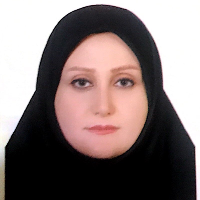Influence of the Babolsar landfill leachate on groundwater quality
The infiltration of leachate resulting from waste disposal into the ground and reaching the groundwater aquifers leads to the pollution of groundwater resources. Considering the importance of water resources in the critical situation of Iran, it is necessary to carry out serious research to protect the existing resources. This research is a case study to simulate the process of leakage and transfer of leachate from landfill to groundwater and the spread and migration of four heavy metals (lead, iron, zinc and cadmium) in the unconfined alluvial aquifer of Babolsar city. The 5 ha landfill investigated in this study receives 150 tons of solid waste per day from Babolsar city. Infiltration and transfer of leachate to this aquifer is simulated using finite difference technique and MODFLOW, MT3DMS codes in GMS software. After the implementation and calibration of the quantitative model, the qualitative model was implemented for four heavy metals (lead, iron, zinc and cadmium). By applying the processes of convection, hydrodynamic dispersion and absorption, the natural cleaning potential of each element was investigated and the qualitative model of pollutant transport was calibrated and the amount and rate of absorption in the studied range were determined for each element. Based on the simulation results, the structure and geological material have had the greatest impact on the transfer of leachate from municipal solid waste in the traditional landfill in Babolsar. Due to their low permeability and high capacity to absorb contaminants, clay and organic matter in the soil of the studied area have prevented the transmission and spread of pollution plume in the alluvial aquifer of Babolsar. In order to predict the potential of natural cleaning of the aquifer in the coming years and determine the fate of these elements, the graph of changes in the concentration of these elements until they reach the standard allowed concentration was drawn with respect to time and the equation for each element was determined. The cleaning equations obtained from the qualitative model are a suitable tool for predicting the development of the pollution plume in the aquifer and determining the natural changes in the concentration of these elements with time for the optimal management of the aquifer in the hands of experts.
- حق عضویت دریافتی صرف حمایت از نشریات عضو و نگهداری، تکمیل و توسعه مگیران میشود.
- پرداخت حق اشتراک و دانلود مقالات اجازه بازنشر آن در سایر رسانههای چاپی و دیجیتال را به کاربر نمیدهد.



